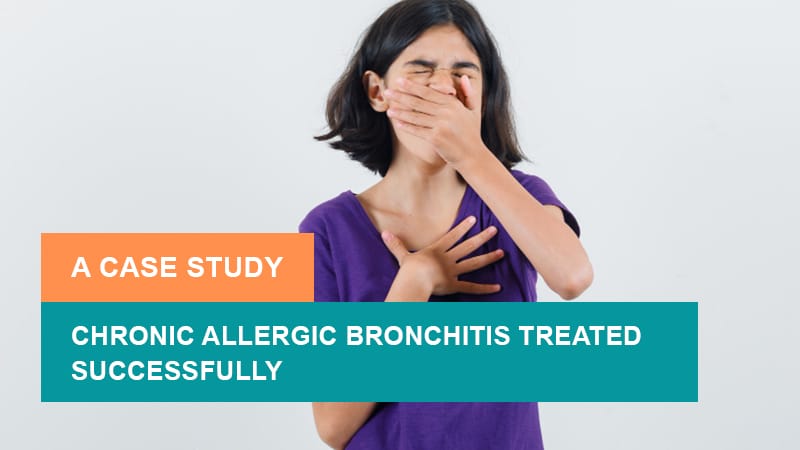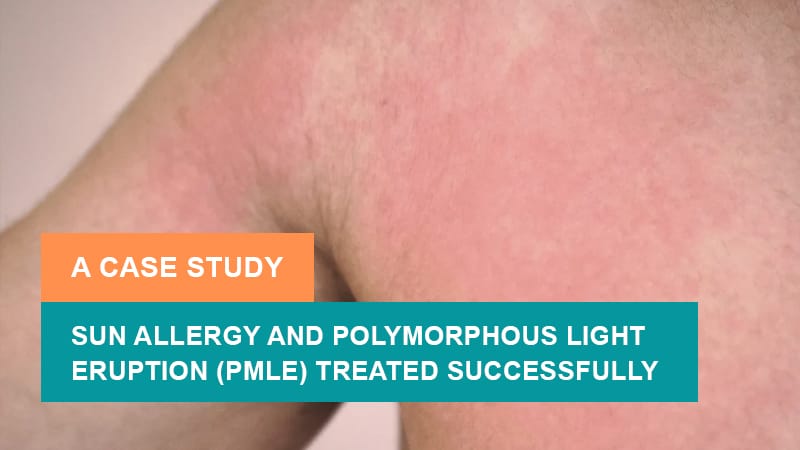Introduction
In modern science, allergy is recognized as a hypersensitive immune response to normally harmless substances but in classical Ayurvedic texts, allergy is not mentioned but reactions and conditions that closely resemble allergic reactions are described, and it is understood as imbalances of the fundamental energies i.e. Tridosha, accumulation of toxins (Ama) and impaired digestive fire (Agni), etc.
Allergy can be described as Ojovyapada in Ayurveda. Here, you will understand allergies, allergy march (Anurjata), and different perspectives of allergies through the lens of Ayurveda.
What is Allergy?
An abnormal immune system response to substances generally harmless to most people is known as allergies. Such substances to which abnormal responses occur are known as allergens and they include dust, pollen, certain food, medications, dust mites, insect stings, etc. The vast experience of IAFA Ayurveda proves that Food Allergy, Skin Allergy, and Nasal Allergy are the most recorded allergic cases.
How Allergy Triggers?
When someone with an allergy encounters allergens, the immune system identifies them as a mistaken threat. It starts releasing chemicals mainly histamine and various symptoms like sneezing, watery eyes, running nose, swelling of tissues, etc. occur, even in severe cases Anaphylaxis may occur which is life-threatening.
What is Allergic March (Atopic March)?
Allergic March is understanding the progression of different allergic diseases. In allergic March the interconnection of various allergic diseases is highlighted which suggests that early manifestation can predispose individuals to subsequent allergic conditions in later life.
Typical progression of allergies often begins in infancy with skin-related conditions and may evolve into respiratory allergies, asthma, etc. during childhood and adolescence.

Stages of Allergic March (Atopic March)
- Food Allergies: This stage is frequently observed in early childhood and may or may not be associated with eczema. Common allergens that cause food allergies are milk, peanuts, eggs, wheat, etc. Food allergies contribute to the overall atopic profile of the individual.
- Eczema (Atopic Dermatitis): It is often the first sign (early stage) that appears in infancy with features like itchy, red, and inflamed skin. This atopic dermatitis is a strong predictor of later allergic conditions because the disrupted skin of infants may increase the sensitization to allergens.
- Allergic Rhinitis: This stage also typically appears in early childhood or sometime later and includes features like nasal congestion, runny nose, itchy eyes, etc. These diseases progress as the immune system continues to react with allergens like pollen, pet dander, dust mites, etc.
- Asthma: This stage may develop in childhood or during adolescence and is characterized by coughing, shortness of breath, wheezing, chest tightness, etc. its development may be influenced by early allergic sensitization.



The Underlying Mechanism of Allergic March
Genetic predisposition, imbalance of immune response mainly of Th2 i.e. skewed T-helper cell, early life exposures, dietary factors, and skin barrier dysfunction plays a critical role in setting the stages for the allergy march.
Allergic March in Ayurveda
Atopic March (Allergic March) can be correlated to Anurjata as it can be seen as the process where an initial allergic reaction sets the stage for subsequent conditions. In Anurjata, the impaired body channels (Strotas), and accumulated toxins (Ama) allow allergens to travel or persist in the body and lead to further sensitization of allergic response over time.
Ayurvedic Aspect of Allergy
Unlike modern concepts, In Ayurveda, Allergy is seen as the result of systemic imbalance rather than an isolated immune response. When fundamental energies (Tridosha) get vitiated, it leads to weakened digestive fire (Jatharagni) and the formation of toxins (Ama).
This toxin accumulates and blocks the different body channels (Strotas) which results in impairment of various metabolic processes and the body becomes susceptible to hypersensitive reactions. Allergic manifestation cascade of events or progression of allergy can be understood as Anurjata (allergic march).

Have A Health Issue?
Consult Online
- Dr. Sahil Gupta (B.A.M.S., M.H.A.)
Ayurvedic Allergy Specialist
CEO & Founder of IAFA®
Understand Allergy Through the Lens of Ayurveda
1. Fundamental Energies Imbalance (Tridosha Imbalance) and Allergy
When one or more Dosha gets aggravated, an allergic reaction occurs which can be well understood by an individual’s inherent constitution (Prakriti). Below are a few examples:-
- Kapha Imbalance: When Kapha is aggravated in the body, it predisposes an individual to a condition that resembles hay fever (allergic rhinitis) or various skin allergies and is often linked with mucus production, congestion, inflammation, etc.
- Pitta Imbalance: The imbalance of Pitta in the body contributes to various most common allergic symptoms like hives, rashes, redness, skin irritation, etc.
- Vata Imbalance: Irregular movement of energy occurs when Vata is aggravated and leads to unpredictable hypersensitive responses to various environmental triggers.
2. Role of Digestive Fire (Agni) and Toxin (Ama) in Allergies
As we know digestive fire (Agni) is responsible for metabolizing food, so when a digestive fire (Agni) is strong, nutrients are effectively absorbed. However, when digestive fire (Agni) is weak, due to improper nutrient absorption, undigested and improperly processed substance “toxin (Ama)” formation occurs.
This toxin is considered the root cause of various diseases including allergies. This toxin obstructs the body channel and impends the normal flow of nutrients and energies. Due to this it acts irritably and provokes abnormal immune and inflammatory responses. It also interacts with Dosha vitiates them and triggers hypertensive reactions to external stimuli.
3. The Link Between Body Channels (Srotas) and Allergies
A toxic by-product of improper digestion leads to toxin (Ama) formation which can irritate and obstruct the channels (Srotas) and create an environment for hypersensitive reactions. Along with this dosha imbalance also affects body channels.
For instance, vitiated Kapha leads to excess congestion and mucus in the Pranavaha Srotas which may lead to allergic rhinitis. On the other hand, vitiated Pitta affects the body channels that supply skin and contribute to various skin reactions. Vata imbalance obstructs the channels and triggers hypersensitivity by unpredictable movement in the body.
4. Role of Diet and Regime in Allergies
The role of diet and daily regime is unique in both worsening and preventing allergies. Proper lifestyle and dietary choices help to manage allergies. On the other hand, if incompatible food or unhealthy daily routine is followed then it may lead to allergies.
Certain food combinations can worsen allergies e.g. Intake of milk after intake of garlic, radish, moringa oleifera, etc. may cause various skin disorders. Another example is fish should not be taken with milk as both have opposite potency which obstructs the blood channels (Rakta Vaha Srotas) and may lead to hypersensitivity reactions.
Causes of Allergy – As Per Ayurveda
- Individual’s constitution (Prakriti): The susceptibility of allergies depends upon the Prakriti of the individual for example individuals with Kapha Prakriti are more likely to have allergies.
- Weak digestive fire (Mandagni) which leads to the formation of toxin (Ama)
- Incompatible food (Viruddha Ahara) e.g. milk with sour fruit milk with fish or milk with salt, etc.
- Irregular eating habits (Adhyashana, Vishmashana, etc)
- Lack of proper sleep (Ratri Jagaran, Diva Swapana)
- Changes in season (Ritu Parivartan) e.g. cold exposure, pollen, dust, etc mainly aggravate Vata and Kapha.
- Exposure to environmental pollutants
- Unhealthy lifestyle with excessive physical exertion (Ati Shrama)
- Excessive toxin exposure (Bahaya Hetu) like chemical allergens, dyes, etc.
Frequently Asked Questions
Question: What is an Atopic March (Allergic March)?
Answer: The progression of allergy conditions that start with infancy and evolve is known as Atopic March. Usually, it starts with eczema and progresses to various other allergies like allergic rhinitis, food allergies, asthma, etc.
Question: How to Stop Atopic March (Allergic March)?
Answer: Boosting digestion, preventing toxin formation, following Dosha Dosha-specific diet, use of anti-inflammatory, immune modulating herbs, etc. are some steps one takes to stop the Atopic March.
Question: How Does Ayurveda Classify Allergies?
Answer: Ayurveda classifies allergies based on the dosha involved or Dosha that is imbalanced. As for Dominant imbalance Dosha, various allergies show various symptoms.
Question: What is An Allergy to Ayurveda?
Answer: The altered immune response of the body is known as allergy and this condition can be described as Ojovyapada in Ayurveda.
Seek Expert Advice
Are you tired of struggling with allergies that disrupt your daily life? Whether it’s constant sneezing, skin rashes, digestive issues, or sinus congestion, Ayurveda offers a natural and holistic solution tailored just for you!
Book Your Consultation Today and Let Us Create A Customized Healing Plan for Allergies Just for You!
References
- Singh, Sarvesh Kumar & Rajoria, Kshipra & Prasad, Mahendra. (2013). Ayurvedic Concept of Allergy about Diet and Regimen.oth have opposite potency which obstructs the blood channels (Rakta Vaha Srotas) and may lead to hypersensitivity reactions.
- Chavan, Ajay & Gujarathi, Rahul & Chavan, Dr & Khedekar, Sumod & Mukhedkar, Ankita. (2023). Allergic Rhinitis and its Explanation in Ayurveda -A Review. 56. 1230- 1238.
- Hill DA, Spergel JM. The atopic march: Critical evidence and clinical relevance. Ann Allergy Asthma Immunol. 2018 Feb; 120 (2): 131- 137. doi: 10. 1016/ j. anai. 2017. 10. 037. Erratum in: Ann Allergy Asthma Immunol. 2018 Apr; 120 (4): 451. doi: 10. 1016/ j. anai. 2018. 02. 033. PMID: 29413336; PMCID: PMC- 5806141.
- G., Arathi & Mv, Anil. (2023). AYURVEDIC UNDERSTANDING OF ACUTE STAGE OF ATOPIC DERMATITIS. International Journal of Advanced Research. 11. 133- 137. 10. 21474/ IJAR01/ 16231.
- Mata, Shweta & Dave, Parth & Bhardwaj, Naresh & Pereira, Carlton & Patel, Kishor & Bhurke, Laxman & Yadav, Babita & Sharma, Bhagwan & Singhal, Richa & Rao, Bcs & Gupta, Bharti & Srikanth, Narayanam & Singh, Kartar. (2023). Effect of Ayurvedic interventions in the management of Allergic Rhinitis -An open-label multicenter single-arm clinical study. Journal of Research in Ayurvedic Sciences. 7. 10. 4103/jars. Jras- 40- 23.
- Dange, Hemalata & Patil, Rupali & Upasani, Chandrasekhar. (2023). A Methodical Review of Allergens and Allergic Reactions. INTERNATIONAL JOURNAL OF PHARMACEUTICAL QUALITY ASSURANCE. 14. 1239- 1245. 10. 25258/ ijpqa. 14. 4. 64.
- Mata S, Rajput S, Tuli IP, Mundada P, Gupta B, Srikanth N, Acharya R Ayurveda Management of Allergic Rhinitis: Protocol for a Randomized Controlled Trial JMIR Res Protoc 2024; 13: e56063.
- Rajveer, Malviya A. CONCEPTUAL STUDY ON THE AYURVEDIC ASPECT OF ALLERGY. Ayush Dhara. 2016. Jul- 13 [2025- Feb. 13]; 1 (1).
- Arora D, Kumar M. Food allergies–leads from Ayurveda. Indian J Med Sci. 2003 Feb; 57 (2): 57- 63. PMID: 1451- 4269.
So IAFA’s Root-Cause Treatment of Allergies is Just 3 Steps Away!

01. Connect With Us
Share your history of illness or Book your appointment

02. Consult With Us
Dr. Gupta a certified Ayurvedic Allergist Consultant

03. Root Cause Treatment
Get an accurate diagnosis, medicines, diet & lifestyle change
Real Case Studies – Successfully Treated Patients
Real Case Studies of Successfully Treated Patients from All Around the World by IAFA Ayurveda®

9 Year Old Female Patient Recovered from Chronic Allergic Bronchitis – A Case Study
This case study presents a 9-year-old female patient who has successfully recovered…

12-Year-Old Child Recovered from Sun Allergy and Polymorphous Light Eruption (PMLE) – A Case Study
This is a case study of a 12-year-old child who has successfully…

40-Year-Old Female Patient Recovered from Dyshidrotic Eczema and Onychomycosis – A Case Study
This case study highlights the successful recovery of a 40-year-old female patient…

40-Year-Old Female Patient Recovered from Urticaria and Angioedema – A Case Study
This case study focuses on a 40-year-old female patient who has successfully…







